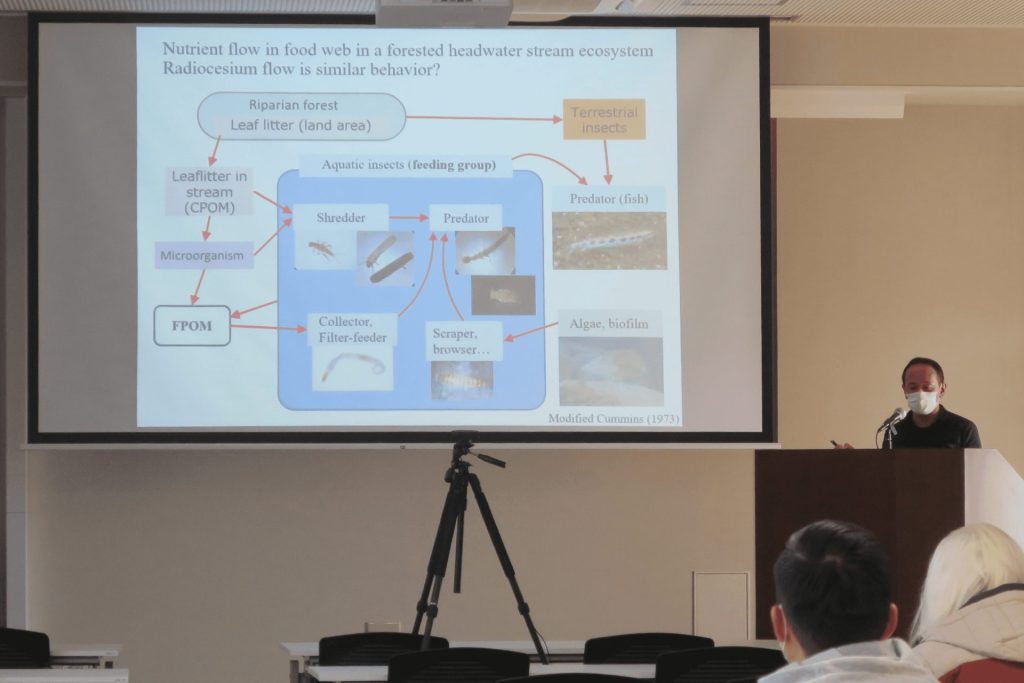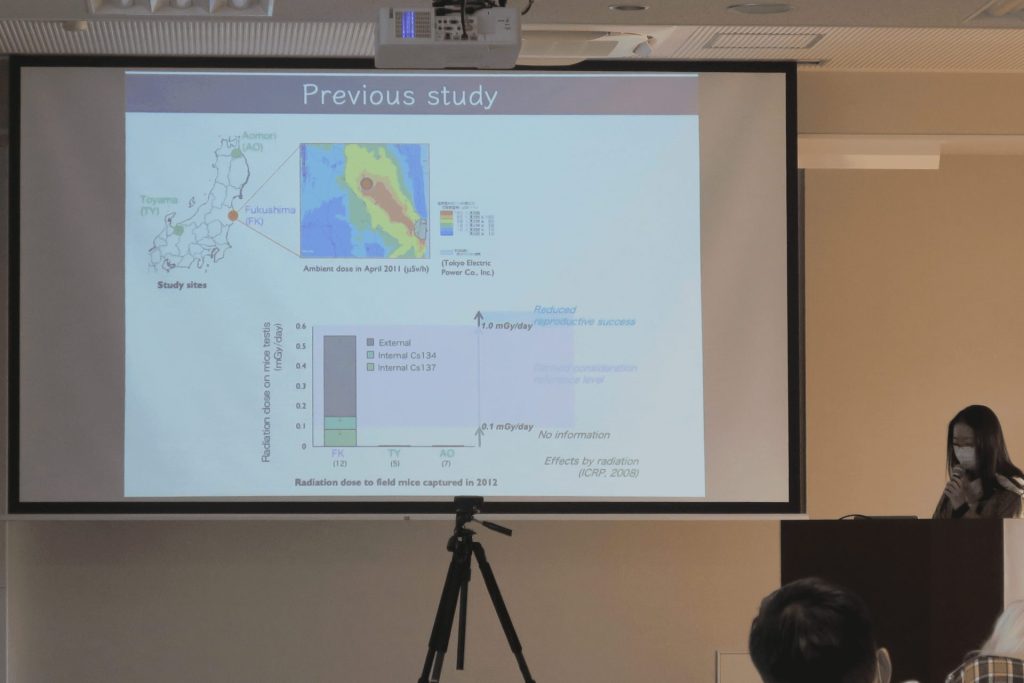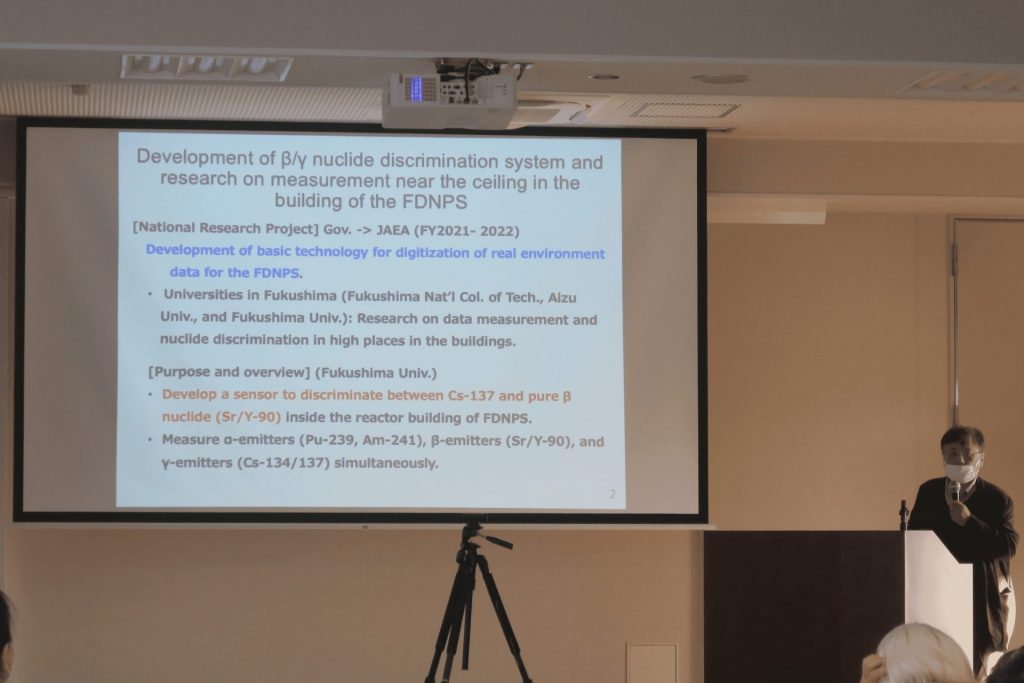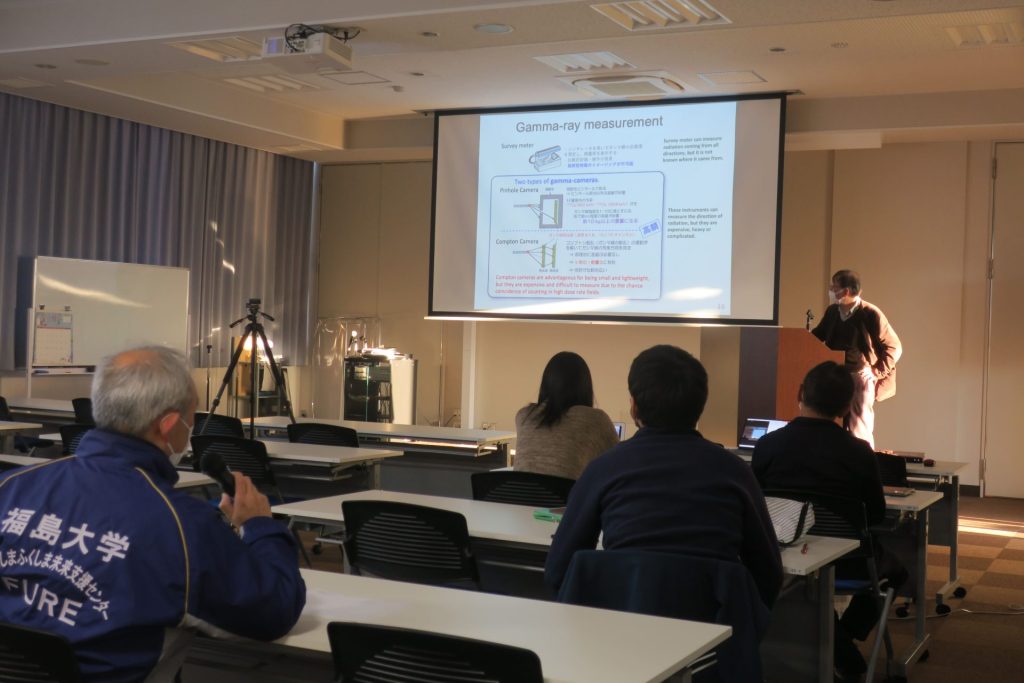November 29th, 2021 We held the 7th IER Seminar of FY2021.<by Project Prof. TORII, Project Assistant Prof. ISHINIWA, and Project Researcher KANASASHI>
Date
November 29th, 2021
Speakers
Project Professor, Tatsuo TORII
Project Assistant Professor, Hiroko ISHINIWA
Project Researcher, Tsutomu KANASASHI
Title
Relationships of 137Cs between riparian forests and headwater streams: Leaflitter and aquatic insects in streams (KANASASHI)
Oxidative stress on male reproductive organ of wild mice living in Fukushima evacuation zone(ISHINIWA)
R & D of two radiation detectors based on new concepts(TORII)
Institute of Environmental Radioactivity (IER) regularly holds the IER seminar, in which the faculty members report on their research results, with the purpose of facilitating their research activities and communication.
At the 7th IER Seminar of FY2021 held on November 29, Project Researcher Tsutomu KANASASHI, Project Assistant Professor Hiroko ISHINIWA, and Project Professor Tatsuo TORII gave presentations on their research activities. The seminar was attended by 18 researchers and graduate students, including online attendees.
Project Researcher KANASASHI has been conducting study on relationships between food webs and 137Cs dynamics in the forest ecosystems in the headwater streams in Fukushima Prefecture. Based on the results of measurement and analysis of 137Cs concentrations in leaflitter in streams and aquatic insects that use them as a source of nutrients, he talked about whether biomagnification of radiocesium has occurred among species of aquatic insects.
Project Assistant Professor ISHINIWA presented the results of her study on oxidative stress response in reproductive tissues of large Japanese field mice (Apodemus speciosus) living in the evacuation zone of Fukushima Prefecture, comparing them with large Japanese field mice collected in the control areas to determine whether external exposure causes oxidative stress responses and in which cells.
Project Professor TORII presented the research and development of two new concept radiation detectors. He explained the concept of identifying radiation sources by using a compact and lightweight measurement system mounted on a small drone that can fly inside buildings, comparing it to conventional measurement devices. If the development of a simple-to-operate and inexpensive measuring device is successful, it is expected to be used for measuring radiation doses near the ceiling of the reactor building at the Fukushima Daiichi Nuclear Power Plant, where decommissioning work is in progress. During the question and answer session, he showed samples and answered questions.
After the presentations, various questions and opinions were exchanged with each presenter.

presenting his research results

giving a presentation

talking about the development

